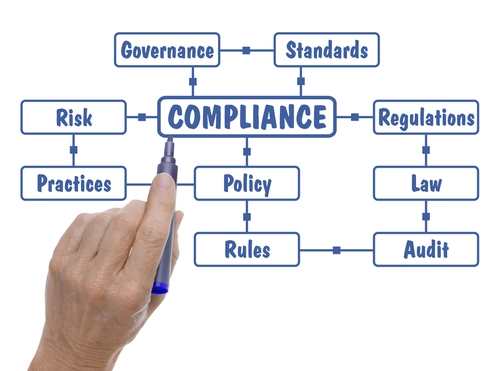Part B Insider (Multispecialty) Coding Alert
Lack of a Practice Compliance Program Puts You at Risk

New OIG policy statement outlines the importance of compliance planning.
Due to the competitive and complex nature of the healthcare industry today, compliance programs should be the cornerstone of each and every practice’s foundation and are mandatory for certain providers that participate in Medicare or Medicaid. Unfortunately, many providers still refuse to put this at the top of their administrative and legal to-do lists.
In order for providers “to reap the mitigation benefits of having a compliance program, for instance, receive substantive reductions in fines for violations of criminal law, the program must incorporate all of the elements from the U.S. Federal Sentencing Guidelines,” says Sarah Warden, Esq. of the Florida Health Law Center’s Davie, Florida office, “Those elements provide what is minimally necessary for an organization to use due diligence and to promote a culture that encourages ethical conduct and legal compliance.”
Background: On April 18, 2016, the Office of Inspector General (OIG) released an amended policy statement that set forth new criteria for its determination of permissive exclusion from federal and state healthcare programs. The new non-binding criteria suggest that implementing an effective compliance program might not be enough to escape exclusion for fraudulent activity, and that the “circumstances of conduct” as well as the provider’s conduct during the investigation will weigh heavily on the OIG’s final decision whether to exclude or precede with a Corporate Integrity Agreement (CIA).
“Simply having an effective compliance program is a neutral factor that will not affect the OIG’s risk determination of whether other remedies besides exclusion adequately protect federal healthcare programs and their beneficiaries,” explains Warden, “But, an organization’s lack of an effective compliance program indicates a higher risk on the risk spectrum announced in the updated policy statement, and the OIG will pursue exclusion for organizations at the highest risk.”
Make Compliance a Priority
In the most serious cases of fraud, the fault is due to the negligence and misconduct of the provider. Oftentimes, the deficiency can be attributed to uneducated staff, outdated software, and ineffective compliance agreements.
“Exclusion from federal healthcare programs is a virtual death sentence for a provider’s business and a criminal conviction under the federal or state fraud and abuse laws requires mandatory exclusion by the OIG instead of permissive exclusion,” says Warden. Luckily, there are steps your practice can take to avoid exclusions that will lower your risk factor on the OIG “risk spectrum.”
Cooperation is the key. Whether your practice is on the up-and-up or makes some questionable decisions regarding patients’ privacy, safety, and security, there are some things to consider before putting a compliance system into place. Some providers violate the laws because they and their staffers misunderstand the rules or aren’t truly committed to a compliance plan while others refuse to remedy known problems and communicate with legal counsel.
“Cooperation and self-disclosure prior to becoming aware of the government’s investigation are factors identified in the OIG’s updated policy statement as being at the low end of the compliance risk spectrum for the OIG’s permissive exclusion determination,” says Warden. A provider’s willingness to be open may lead to a more favorable CIA or other OIG resolution versus outright exclusion.
Tips and Tools
Once you and your staff decide to embrace what the OIG calls “a culture of compliance,” there are some things you want to include in your office plan. Take a look at these ten dos and don’ts to follow when adopting a new compliance program:
Resource: For more information on the OIG’s policy statement on permissive exclusion, visit http://oig.hhs.gov/exclusions/files/1128b7exclusion-criteria.pdf.
Related Articles
Part B Insider (Multispecialty) Coding Alert
- Part B Revenue Booster:
Turn Around These 5 Basic Blunders to Improve Your Cash flow
Learn how common coding mistakes can hurt your practice budget. As the healthcare industry becomes [...] - Zika Virus Update:
Zoned-out About Zika?
Provider resources and codes abound to deal with summer Zika virus woes. School’s out and [...] - Compliance:
Lack of a Practice Compliance Program Puts You at Risk
New OIG policy statement outlines the importance of compliance planning. Due to the competitive and [...] - Part B Coding Coach:
General Surgery: Some CCI Edits Can Cause Trouble
Be aware of modifier 59 as an option to help navigate the changes. When your [...] - Physician Notes:
AHRQ Resource Aids Providers When Accidents Happen
Plus: CMS Updates ICD-10 with Specialty Support Mistakes are made, and sometimes lives are lost [...]




